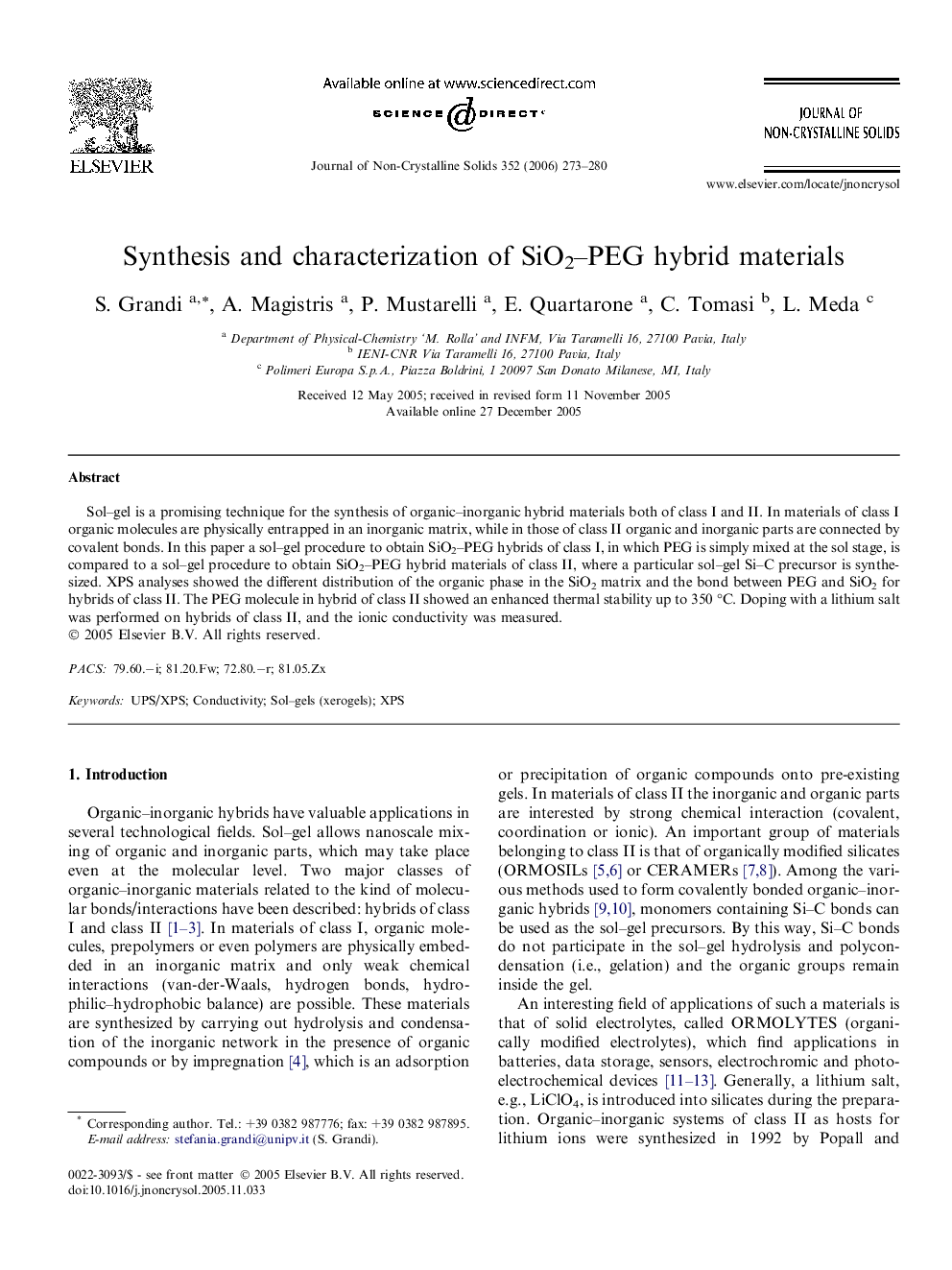| Article ID | Journal | Published Year | Pages | File Type |
|---|---|---|---|---|
| 1485974 | Journal of Non-Crystalline Solids | 2006 | 8 Pages |
Sol–gel is a promising technique for the synthesis of organic–inorganic hybrid materials both of class I and II. In materials of class I organic molecules are physically entrapped in an inorganic matrix, while in those of class II organic and inorganic parts are connected by covalent bonds. In this paper a sol–gel procedure to obtain SiO2–PEG hybrids of class I, in which PEG is simply mixed at the sol stage, is compared to a sol–gel procedure to obtain SiO2–PEG hybrid materials of class II, where a particular sol–gel Si–C precursor is synthesized. XPS analyses showed the different distribution of the organic phase in the SiO2 matrix and the bond between PEG and SiO2 for hybrids of class II. The PEG molecule in hybrid of class II showed an enhanced thermal stability up to 350 °C. Doping with a lithium salt was performed on hybrids of class II, and the ionic conductivity was measured.
